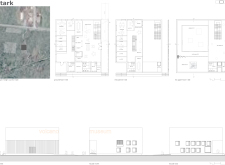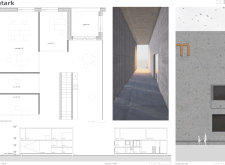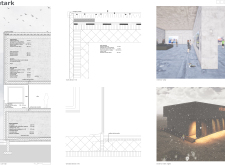5 key facts about this project
The Volcano Museum is located in an area characterized by volcanic landscapes, emphasizing a strong connection between the building and its natural surroundings. The design focuses on a repeating square geometry, which creates a cohesive and functional structure. The museum serves as a cultural resource, aimed at educating visitors about volcanic activity and geological history.
Design Concept
The building’s form showcases a clear geometric expression, with the square motif seen in various design elements, including windows and exhibition spaces. This repetitive geometry fosters unity and facilitates easy navigation within the building. The entrance faces east, guiding visitors from the main road directly into the heart of the museum, providing easy access to its facilities.
Spatial Arrangement
Public and semi-public spaces are well defined in the layout, ensuring that essential visitor services, such as the information desk, ticket office, and café, are conveniently situated near the entrance. This thoughtful arrangement creates a friendly environment for guests, encouraging exploration of the museum. The exhibition areas are located on the upper floor, designed without windows to maintain focus on the exhibits and enhance the viewing experience.
Integration with Nature
A significant feature of the design is its integration with the surrounding landscape. The existing pathway flows through the museum, improving the connection between indoor and outdoor spaces. Visitors can enjoy the natural scenery while exploring the exhibits, reinforcing the museum's role as a bridge between culture and nature in the area.
Materiality and Aesthetic
Exposed concrete is the primary building material, reflecting the ruggedness of the volcanic landscape. This choice aligns with the effort to respect the site’s topography, as the museum gently rises from the ground rather than sinking into it. The angular shapes of the structure mimic natural geological forms, fostering a dialogue between the architecture and the environment.
The entrance features a prominent staircase that connects different levels of the museum. This staircase is both functional and visually striking, guiding visitors as they move through the space and serving as a focal point in the overall design.






















































